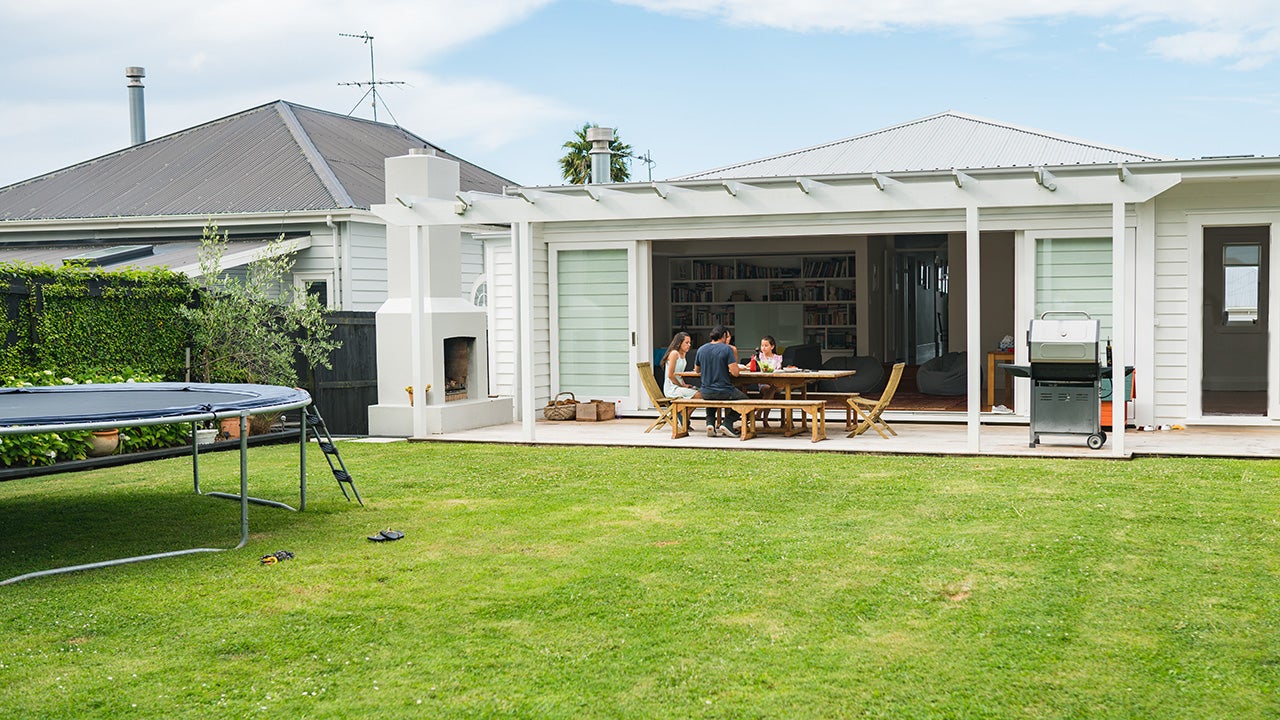I’m not a homeowner. Here’s why the home insurance crisis keeps me up at night

Living in San Francisco, I am surrounded by things out of my financial reach: self-driving Jaguars, Corgis pushed in $400 pet strollers and, most prominently: houses. I currently rent, but I entertain the notion that one day, I will own property. Maybe not in San Francisco, and maybe not even in California. But, consciously or not, I’ve always considered homeownership a part of my financial future. These days, I am less sure.
As a home insurance writer, it is (quite literally) in my job description to keep up with all the happenings of the property and casualty insurance market. Every day, I read about catastrophic natural disasters, sky-high premiums, shrinking coverage availability and homeowners stuck between a rock and a hard place. While I can’t count myself among the homeowners, I am absolutely a part of a group that is genuinely concerned about what the home insurance crisis means for the future of owning a home.
What is the home insurance crisis?
You may have seen the term ‘home insurance crisis’ in recent news headlines, but what exactly is it? What does it actually mean for homeowners? Put simply, the home insurance crisis is two things: home insurance premiums increasing and carriers halting business in certain states. In states hit the hardest, these two things are happening simultaneously.
State regulations can also play into it; insurance is a state-regulated product, and it’s up to each state to set its own rules regarding insurance pricing and availability. For example, part of California’s home insurance crisis was spurred on by the strict rules about how much insurance companies can raise rates. On the other hand, much of Florida’s insurance woes can be traced back to widespread insurance fraud.
While the causes can vary, the effects of an expensive and limited home insurance market are largely the same across most states. For homeowners who are required by their mortgage companies to have an insurance policy, they may choose minimal coverage. For homeowners who own their homes outright, they may choose to go without insurance entirely. Both strategies may help homeowners circumvent headaches and high premiums in the short term but can be extremely financially risky if your home is damaged.
Climate change and home insurance
One of the biggest factors underscoring the home insurance crisis across the country is climate change. As of mid-May 2024, there have already been 11 billion-dollar weather and climate disaster events, with total damage estimated to be around $25 billion.
Home insurance companies have taken a hit. A report from AM Best shows that, during the first half of 2023, the U.S. Property and Casualty industry had around $24.5 billion in net underwriting losses. To compare, 2022 recorded net underwriting losses of $26.5 billion for the entire year. Operating at that high of a loss is unsustainable for most insurance companies, which have little choice but to raise rates to make up for past losses and anticipate future ones. Nationally, the average cost of home insurance has been on a steady rise year after year.
I was already regularly doom-scrolling about climate change, and I don’t think getting into the weeds of how it directly affects home insurance has helped ease any of my anxiety. If I ever end up buying a home, it will be the most valuable thing I own. If I can’t financially protect it with an insurance policy, what is it worth?
Home insurance and home buying
There’s no getting around it: it’s hard to buy a home. Bankrate’s Home Affordability Report shows that to afford a median-priced home as of early 2024, Americans need an annual income of $110,871 per year, an increase of 46 percent from the beginning of 2020. In California, that figure balloons to $197,057 per year. That’s outside of my budget, and I’m not the only one. In Bankrate’s Down Payment Survey, 54 percent of U.S. adults cited that their income was not high enough to afford a down payment, while 51 percent said that the cost of living is a barrier.
Once you’re able to afford your down payment, you still need to find an insurance policy. Home insurance is required by most mortgage companies to protect your lender’s financial investment in your home. Depending on where you live, you may also be required to have flood or wind insurance or both for that same reason.
Things get messy when a property is suddenly uninsurable. Traditionally, the mortgage servicer puts the homeowner into what's called a 'forced-place' policy — expensive, last-resort coverage. If there are truly no carriers writing policies in a given area, that might be a homeowner's only option— Jeff Ostrowski, Bankrate Mortgages Analyst
Forced place insurance isn’t ideal and neither is relying on your state’s FAIR plan (if you have one). Both are usually significantly more expensive than a traditional policy. The FAIR plan usually covers much less than a standard private policy, too, which is something of a one-two punch for homeowners with no other choice. Home insurance is only a small part of the home-buying equation, but it is still an important one. Buying a home takes monumental effort, and buying insurance is on its way to becoming almost as much of a hassle.
Home is where the money is
Bankrate’s Home Affordability Report shows that 78 percent of U.S. adults consider homeownership a part of the American Dream. But owning a home is more than having the freedom to paint your walls whichever color you choose. Homeownership has historically been one of the safest ways to build wealth. According to real estate brokerage Redfin, the U.S. housing market is worth $47.5 trillion. Data from the Federal Reserve shows that combined, American homeowners possess almost $32.7 trillion in home equity as of Q1 2024.
Without a mortgage company breathing down your neck, it can be tempting to forego home insurance altogether and “go bare.” After all, why pay an average of $179 each month for something that you may or may not even use? An increasing number of homeowners are going this route: a report from the Insurance Information Institute (Triple-I) and Munich Re, a reinsurance company, shows that 12 percent of homeowners admit to going bare, more than double the 5 percent reported in 2005. Alarmingly, between 15 and 20 percent of homeowners in hurricane-prone Florida claim to not have home insurance. However, it’s important to remember that some homeowners may not have any other choice but to go without insurance if they can’t find an affordable policy.
Without home insurance, all it takes is one bad storm, flood or wildfire to tank your home’s value. Bankrate’s Emergency Savings Report found that only 44 percent of U.S. adults would pay an emergency expense of $1,000 or more from their savings. That’s less than most insurance deductibles, not to mention the cost of rebuilding a home from the ground up.
Home insurance and generational wealth
Your property houses not just you but, in most cases, your wealth. As you gradually pay off your mortgage, your equity in your home increases. You can leverage this equity for tons of different things, like paying for higher education, an emergency expense, investing, retirement — you name it.
The more of your home you own, the more you can do with your ownership stake. When you own your home entirely, you can pass the asset down. From my perspective, the home insurance crisis is throwing into question the tenability of homeownership as a vehicle for generational wealth. Severe weather events are getting both worse and more common, and insurance is only becoming harder to find and keep. While it may sound dramatic, I do not think it is out of the question to consider that the likelihood of a home being destroyed or seriously damaged due to severe weather is uncomfortably high.
The bottom line
If I had a silver bullet solution for securing affordable home insurance, believe me, I wouldn’t keep it to myself. With new hurdles arising in terms of home affordability, owning a home is still a long way off for me — if it’s still in my future at all. Bankrate’s Rent vs. Buy Affordability Study found that it is cheaper to rent than buy property in the 50 largest U.S. metro areas, San Francisco included. For now, you’ll find me Zelle-ing my landlord every month for my third-floor walkup.
Methodology
Bankrate utilizes Quadrant Information Services to analyze 2024, 2023 and 2022 rates for all ZIP codes in all 50 states and Washington, D.C. Quoted rates are based on married male and female homeowners with a clean claim history, good credit and the following coverage limits:
- Coverage A, Dwelling: $300,000
- Coverage B, Other Structures: $30,000
- Coverage C, Personal Property: $150,000
- Coverage D, Loss of Use: $60,000
- Coverage E, Liability: $500,000
- Coverage F, Medical Payments: $1,000
The homeowners also have a $1,000 deductible, a $500 hail deductible and a 2 percent hurricane deductible (or the next closest deductible amounts that are available) where separate deductibles apply.
These are sample rates and should be used for comparative purposes only. Your quotes will differ.
You may also like

Does your homeowners insurance go up after a claim?

Factors that impact your cost of homeowners insurance

Is home insurance required? What homeowners need to know

Home warranty vs. homeowners insurance


